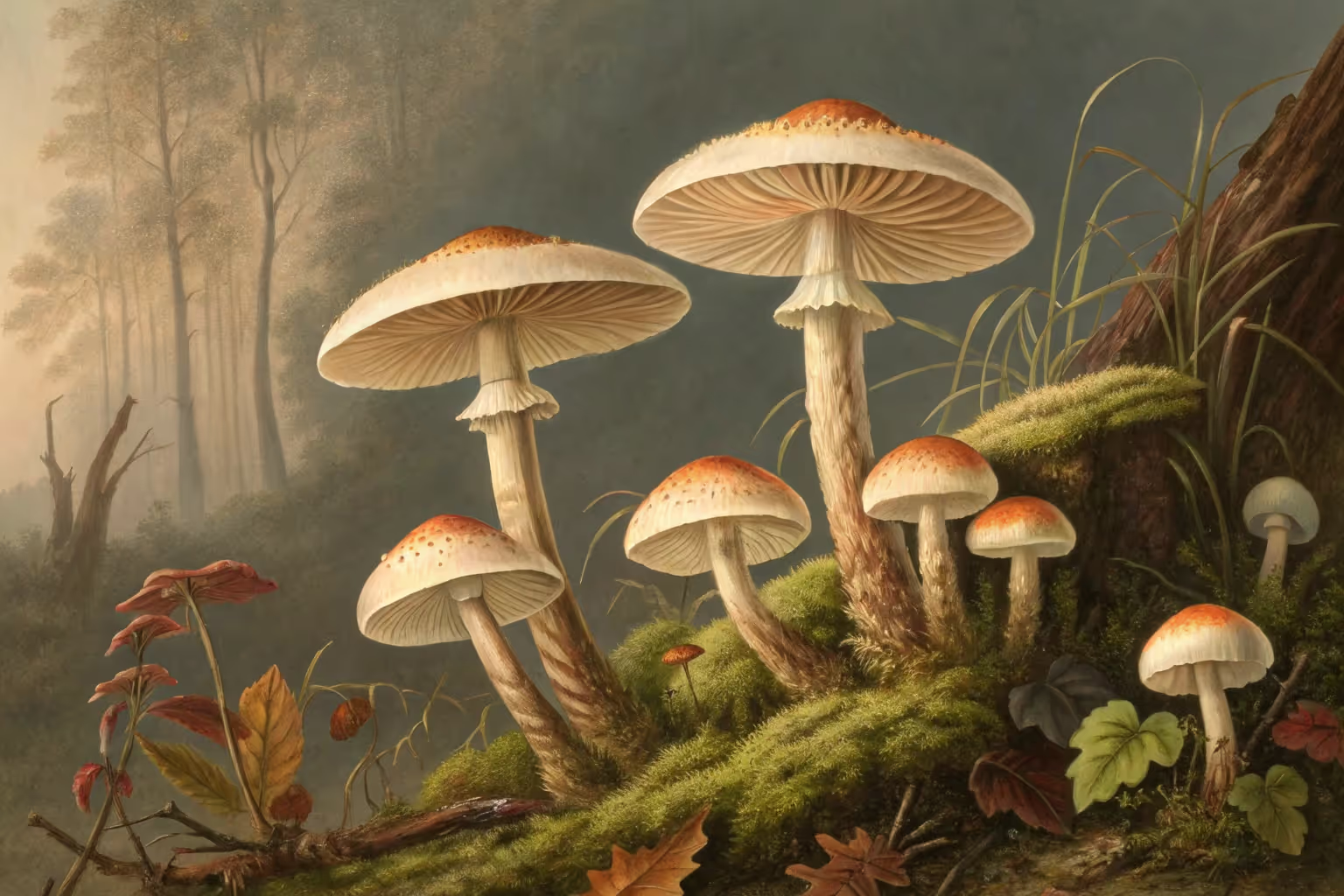How to Grow Legumes

Legumes
Plant Legumes at the right window—peas before last frost, beans after; sow 1–2 inches deep with Rhizobium. Rotate Legumes yearly, space rows for airflow, pick pods young, and mulch to steady moisture. Stick with me and we’ll turn beans, peas, and lentils into the backbone of your beds.
Cheatsheet: Successful Legume Cultivation
🌱 Quick Start
- Prep: 20 min, Grow: 70-120 days
- Germination: 7-14 days, 55-85°F (13-29°C)
- Inoculate seeds for up to 30% higher yields
- No fertilizer needed: legumes fix nitrogen
🛠️ Tools and Products You'll Need
- Certified legume seeds (beans, peas, lentils, chickpeas, etc.)
- Legume inoculant
- Hoe or hand trowel
- Mulch (straw or compost)
- Watering can or hose
- Trellis or netting (for climbing types)
🌧️ Soil & Siting
- Full sun: 6-8 hrs daily
- Loose, well-drained soil, pH 6-7.5
- Add compost—avoid fresh manure
- No need to rotate with other legumes
🪴 Step-by-Step
- Prepare soil Loosen 8 in (20 cm) deep. Mix in compost.
- Inoculate seeds Dust seeds with inoculant powder just before sowing.
- Sow Plant 1 in (2.5 cm) deep, 2 in (5 cm) apart, rows 18 in (45 cm) apart.
- Water Keep soil moist, not soggy. Water early, especially at flowering.
- Mulch Apply mulch after emergence.
- Support Install trellis for climbing varieties once 6 in (15 cm) tall.
- Harvest Pick pods young for snaps, or leave to dry for storage beans.
🌿 Crop Health & Self-Sufficiency
- Improves soil—fixes 50-200 lbs (22-90 kg) N/acre
- High in protein, fiber, iron, B vitamins
- Interplant for pest resistance & healthy rotation
🌱 Pro Tips
- Succession sow every 2 weeks for continuous harvest
- Let roots decompose in soil post-harvest for max nitrogen benefit
- Save seeds from healthiest plants
Legumes: how I grow them for flavor, fertility, and sanity
I grow Legumes for the plate and for the soil, in equal measure. They feed you, then quietly feed everything else.
Soil first: structure, pH, and tilth
Rhizobium bacteria need air in the soil, so I target crumbly structure with 3 to 5 percent organic matter. A pH of 6.0 to 7.0 keeps nodulation humming, and I lime acidic beds the fall before planting.
I avoid high nitrogen starters that make plants lazy. A light pre-plant dose of phosphorus and potassium keeps roots and pods rolling.
Nodulation made simple
Inoculation is cheap insurance, and crop-group specific. I dust seed with the right strain, then sow while the seed is tacky so the peat sticks.
At first bloom I slice a nodule open to check the color. Pink means active nitrogen fixation, white or green means stalled biology and I revisit pH, compaction, and watering.
FAO reports that pulse crops can fix 20 to 200 kg nitrogen per hectare each season, cutting fertilizer needs while improving soil health. Source: FAO, “Pulses and nitrogen fixation,” 2016.
Sowing windows and soil temperatures
- Peas: 40 to 75 F soil, 4 to 24 C. I sow 4 weeks before last frost and again for fall.
- Favas: 40 to 70 F, 4 to 21 C. Best in cool spring or fall.
- Snap and dry beans: 60 to 95 F, 16 to 35 C. I wait until the soil feels warm on the wrist.
- Chickpeas and lentils: 50 to 85 F, 10 to 29 C. Early spring in light soil keeps them compact.
- Soybeans: 55 to 90 F, 13 to 32 C. Short-season types beat summer heat.
Depth, spacing, and rhythm
I plant peas 1 inch deep, 2.5 cm, at 2 inch spacing, 5 cm. Beans go 1 to 1.5 inches, 2.5 to 4 cm, at 3 to 6 inches, 7 to 15 cm.
Lentils and chickpeas ride shallow at 0.5 to 0.75 inch, 1.2 to 2 cm. I thin hard so air moves and mildew sulks.
Trellising that never lets me down
Peas climb 4 to 6 feet, 1.2 to 1.8 m. Pole beans top 6 to 8 feet, 1.8 to 2.4 m, so I lash cattle panel to T-posts and sleep easy on windy nights.
Netting saves time for peas, while stout poles suit scarlet runners and yardlongs. I keep the lower 6 inches, 15 cm, clear to limit slugs.
Watering for pod set
Even moisture wins. I run drip at 0.45 gph emitters, 1.7 lph, and water deeply once or twice weekly, bumping it during flowering and fill.
Mulch holds the swing steady, and it saves me in July heat. If leaves cup at noon, I water at dawn the next day.
Fertility: feed the microbes, not the leaves
I side-dress with a light compost band at bloom. Too much nitrogen gives vines and no pods, and I learned that the hard way one humid summer.
A pinch of molybdenum on very acidic soils can rescue weak nodulation. Most gardens never need it once pH is right.
Varieties that earn their row
- Peas: ‘Sugar Snap’ for sweet crunch, ‘Cascadia’ for compact beds, ‘Tall Telephone’ for flavor.
- Pole beans: ‘Fortex’ for filet length, ‘Rattlesnake’ for heat tolerance, ‘Blue Lake Pole’ for reliable yield.
- Bush beans: ‘Provider’ for cold soil starts, ‘Roma II’ for meaty pods.
- Dry beans: ‘King of the Early’ for short seasons, ‘Jacob’s Cattle’ for stew, ‘Black Turtle’ for standby storage.
- Lentils: Small-seeded types fill quickest in home plots. Choose local-bred lines for disease resistance.
- Chickpeas: Desi types handle stress better than Kabuli where summers run hot and dry.
- Favas: ‘Aquadulce Claudia’ for cool springs. I pick them green, then let a few dry for winter soups.
- Soybeans: ‘Hakucho’ and ‘Envy’ for fast edamame in short summers.
Pollination, heat, and flower drop
Peas and beans self-pollinate, yet extreme heat still strips blossoms. Above 95 F, 35 C, my beans rest, then rebound once nights cool below 70 F, 21 C.
Favas invite bees and hoverflies, and I space rows wider to give pollinators a clear lane. That tweak alone doubled my pod count one spring.
Pests, diseases, and clean culture
- Aphids: I blast with water, then release lacewings if the colony rebounds. Reflective mulch helps in hot spells.
- Mexican bean beetles: Yellow eggs under leaves go in the bucket. Row cover early, then remove at bloom.
- Cutworms: Collars at transplant time for soy. Tidy weeds before planting to starve them out.
- Root rots and anthracnose: Rotate 3 to 4 years, keep foliage dry with drip, and avoid working wet plants.
- Mosaic viruses: Seed from reliable sources, cull suspect plants fast, and keep aphids in check.
Harvest cues I trust
Snap beans taste best before seed swell. Peas snap rather than bend when ready, and the sugars fade within hours, so I chill them quick.
Shellies get picked when seeds fill the pod but before skins toughen. Dry beans and chickpeas wait until pods turn parchment, then I cut whole plants and finish drying on racks.
Drying, storage, and cooking quality
I aim for 12 percent seed moisture for storage. Beans bite the tooth, not the fingernail, when dry enough, or I use a cheap moisture meter.
Stored in glass with a desiccant, they hold 18 months in my pantry. The flavor punches above supermarket stock.
Seed saving without drama
Peas and beans self quite well. I rogue off-types early, then save from at least 20 plants to keep vigor.
Favas cross by insects. I separate varieties by 50 feet, 15 m, or bag a few flower clusters for pure seed.
Cover cropping with Legumes
I rely on field peas, hairy vetch, and crimson clover as living mulch. Sown late summer, they tie up free nitrogen and hold soil over winter.
I mow at early bloom before seed sets, then tarps or compost finish the breakdown. The following crop comes up hungry and happy.
RHS notes that many Legumes leave 20 to 60 kg nitrogen per hectare available to the next crop after harvest, depending on residue handling. Source: Royal Horticultural Society, Legumes advice page.
Rotation and nitrogen budgeting
I place heavy feeders after Legumes: brassicas, corn, leeks. A typical dry bean crop will fix plenty for itself and still leave a modest surplus if residues return to the bed.
Soil tests guide me. I watch cation exchange capacity and organic matter to keep the system balanced.
Common mistakes I stopped making
- Planting into cold, soggy beds that rot seed. I wait for a handful to crumble, not smear.
- Overfeeding nitrogen. Lush vines, empty pods, hard lesson.
- Skipping inoculant on new ground. It costs pocket change and pays back all season.
- Letting weeds get knee-high. Early, shallow hoeing saves hours later.
- Harvesting dry beans too late. One rain on mature pods, and sprouting starts inside the shell.
Buying guide: gear and supplies that earn their keep
- Inoculant by crop group: Pea and vetch group, bean group, soybean specific. Check expiration dates and refrigerate.
- Trellis: Heavy netting for peas, cattle panels for pole beans, plus T-posts and clips.
- Irrigation: 1 gph or 0.45 gph emitters with pressure regulation, 3 to 4 psi, and a simple filter.
- Soil testing: A reputable lab for pH, P, K, and micronutrients, plus a handheld pH meter for quick checks.
- Seeds: Choose region-bred lines from trusted suppliers, and look for disease resistance codes.
- Storage: Mesh racks for drying, food-grade buckets with gamma lids, and desiccant packs.
Quick answers to nagging questions
Yellow leaves midseason usually point to water stress or root disease, not lack of nitrogen. Check nodules before feeding.
Plants with blooms but no pods likely faced heat or drought during flowering. Cool the roots with mulch and keep moisture steady.
Beans with stringy pods sat too long. Pick every 2 to 3 days in peak season to keep vines producing.
Weak stands often trace back to seed depth in cold soil. Go shallower early, deeper once soils warm.
Anecdotes from messy, honest beds
One August my pole beans sulked until I laid a fresh straw mulch and cut water in half. The next week pods set like a switch flipped, and dinner tasted like relief.
I once skipped inoculant on a brand-new plot to test my luck. The nodules came up ghost-white, and yield paid the price.
Nutritional and culinary payoffs
Pulses carry protein, fiber, and minerals. USDA lists cooked lentils at about 18 grams of protein per cup, 198 g, which makes my winter soups pull their weight.
Fresh snap beans bring lutein and crisp texture. I blanch peas for 90 seconds, ice them hard, then freeze flat for bright green in February.
Sustainability angle that shows up in the bed
Legumes reduce synthetic nitrogen demand and greenhouse gas emissions from fertilizers. My rotations need fewer inputs each year, and that savings shows up on the seed bill.
Cover crop blends with a legume component boost soil aggregation within a season. Earthworms throw castings under the mulch like confetti.
Trusted references I lean on
- FAO, “Pulses and nitrogen fixation,” 2016. Clear overview of biological nitrogen fixation and agronomy.
- USDA ARS Pulse Crop Health guidelines. Practical disease and pest notes for peas, lentils, chickpeas.
- UC ANR Vegetable Research Center, bean production notes. Solid on irrigation thresholds and heat effects.
- Royal Horticultural Society, Legumes advice page. UK climate tips with tidy cultural practices.
- ATTRA Sustainable Agriculture, Legume cover crops. Straightforward rotation and N-credit tables.
Frequently Asked Questions about Growing Legumes
Which soil type suits legumes best?
Legumes prefer well-drained, fertile soils that are slightly acidic to neutral — an ideal pH range is between 6.0 and 7.0. Incorporate organic matter like compost to enhance soil texture and nutrient availability.
What spacing should I allow between legume plants?
Spacing varies depending upon the type; typically, bush legumes require spacing of about 3 inches (7.6 cm), while climbing varieties benefit from 6 inches (15 cm) spacing between individual plants. Proper spacing ensures adequate airflow and minimizes disease.
Do legumes require inoculation before planting?
Using Rhizobium inoculant can significantly improve your legume plants' nitrogen-fixing ability, particularly in soils that have not hosted legumes recently. Apply inoculant directly onto seeds at planting to maximize its effectiveness.
What sort of watering schedule helps legumes thrive?
Regular moisture supports healthy growth, especially during pod development. Water legumes consistently, providing around 1 inch (2.5 cm) of water per week. Avoid over-watering to prevent root rot.
When do legumes typically mature and how do I recognize readiness for harvest?
Harvest timing ranges from approximately 55 to 90 days, depending on variety and climate. To recognize readiness, check pods: pick fresh beans when pods are plump and colorful, while dried beans are ready once pods turn brown and brittle.
What pests frequently affect legumes, and how can I manage them organically?
Common pests include aphids, bean beetles, and cutworms. Effectively manage these insects by encouraging beneficial insects like ladybugs, employing crop rotation annually, and utilizing organic methods such as neem oil sprays.
How can I improve legume productivity throughout the season?
Regularly picking mature pods stimulates plants to continue producing. Providing vertical support for climbing varieties enhances airflow and sun exposure, leading to healthier plants and higher yields.
Legumes are straight shooters. Full sun, well-drained soil, steady moisture. Inoculate seed in new beds to load roots with rhizobia and nitrogen nodules. Time your sowing. Beans after the ground warms. Peas in cool spring. Set a trellis for climbers. Mulch once seedlings size up. Water deep, then let the surface dry. Feed lightly; heavy nitrogen stalls pods. Sow in small waves for a long run.
Pick early and often. Leave roots after harvest so the nodules keep feeding the bed. Rotate legumes away from the same spot for 3 to 4 years to head off disease. Watch aphids and beetles; knock them back with a rinse or a quick pinch. With simple care, Legumes return flavor to the plate and fertility to the soil. That is the quiet deal.







